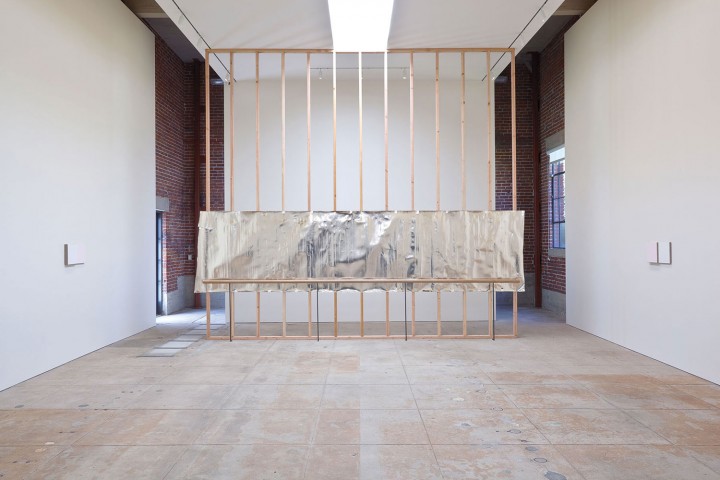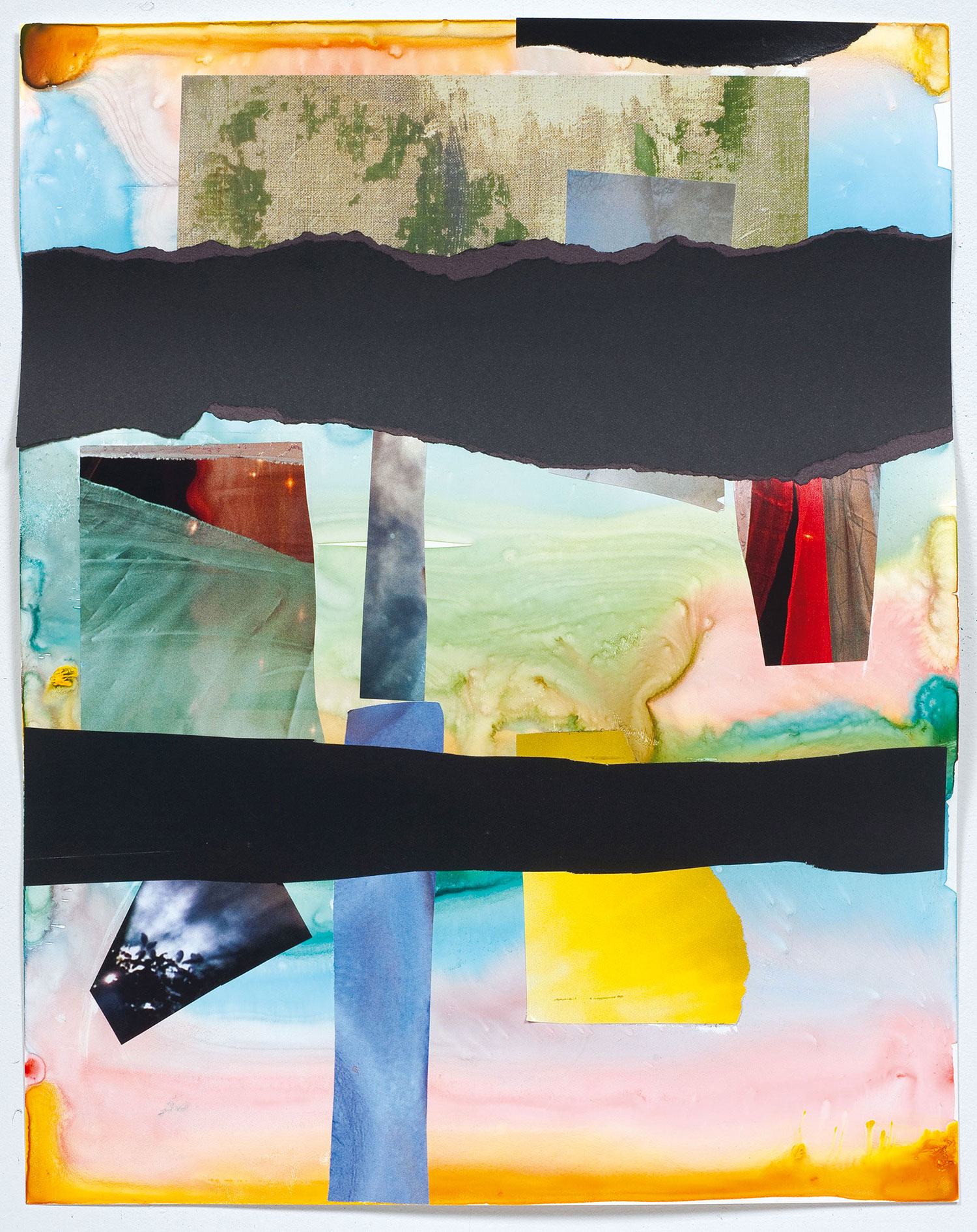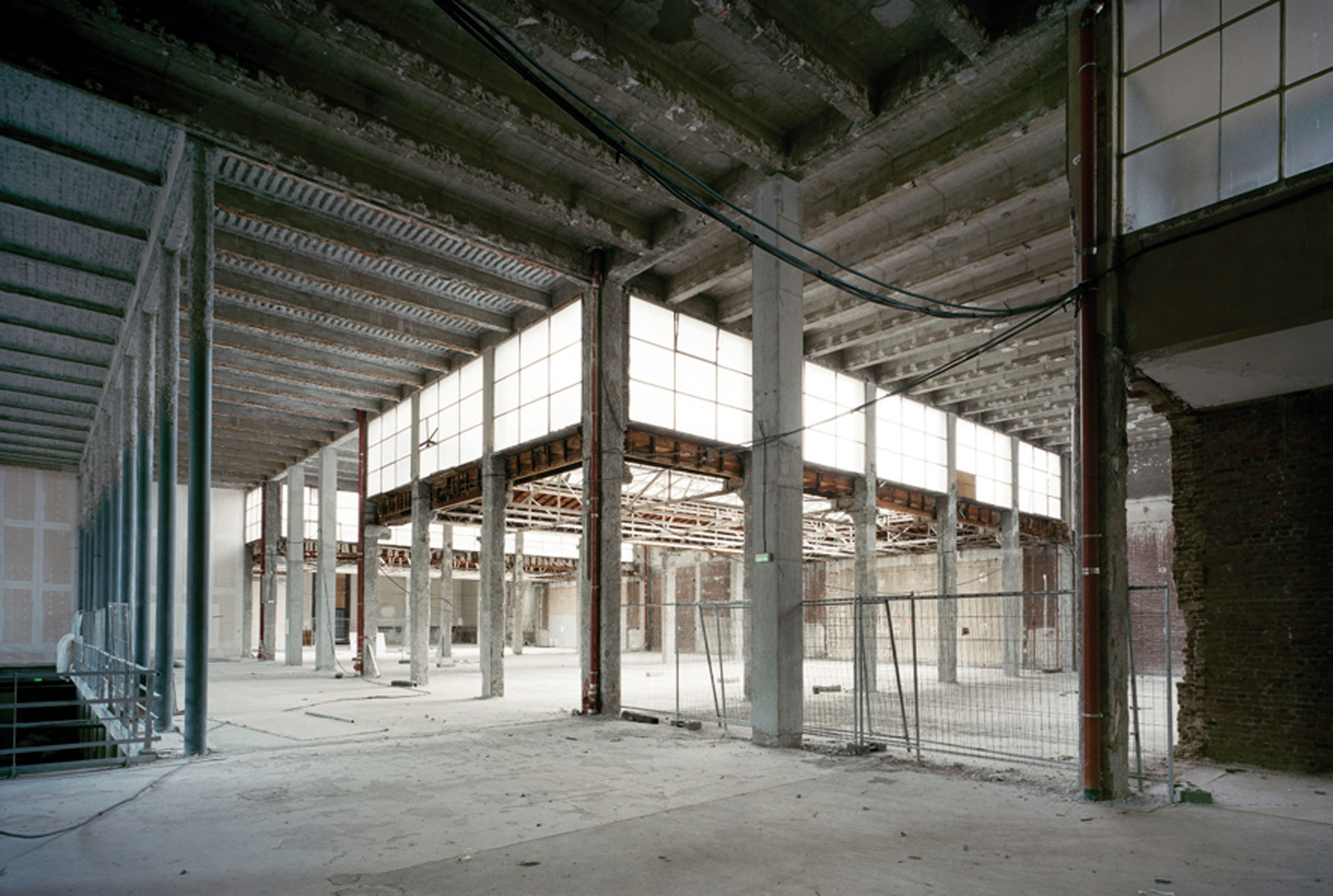
Matthew Lyons: I thought we could start by talking about the art scene up in Buffalo where you’re from and went to school, which also has connections to the history of The Kitchen and people like Steina and Woody Vasulka, Tony Conrad, Cindy Sherman and Robert Longo.
JK: I had to go to the Castellani Art Museum in Niagara Falls when I was 15 to write on a piece of artwork for an English class, and I chose to write on one of Robert Longo’s “Men in the Cities” (1969) pictures. I didn’t know what it was, who he was, but it was an arresting image, and I got encouragement from how that piece turned out so I started focusing on art and ended up going to college for it. In one of my classes, the students were allowed to make up their own project, and we decided to make an arts space. It was called Kitchen Distribution and it lasted for about two years. This was in the days of MySpace, so we could track bands that were coming from Pennsylvania to Canada. We’d say, “Come to Buffalo and you can make $150-200, whatever the door is going to be, and get a free place to stay,” and that was appealing to most bands that we approached.
ML: What were some the bands that played there?
JK: The Flying Luttenbachers. Japanther came through a couple of times, once with “This Bike Is a Pipe Bomb” — that was a good show. Yip-Yip, from Orlando. Tony Conrad played there once. Who else? Pit Er Pat, Hologram, from Brooklyn — they were great. Thanksgiving (Adrian Orange). Burning Star Core.
ML: How did you come up with the name of the place?
JK: It was the name on the side of the building. It was a distributor of kitchen appliances. I worked for the guy that ran the building as a shop rat for his woodworking and we became good friends. It’s funny to go back to the same building all the time, to be reminded of all these things.
ML: What art were you making while you were so involved with booking these music shows? Is this around the same time when the ideas for the silver paintings started?

JK: Yes. The room where I made my first paintings is still there. It was important that I was just being active. We had a good scene going. But I still had to go to school and make work, and I was interested in becoming a painter. So I just decided to start making paintings in a way that I felt was responsible to all the things that I was paying attention to that had informed my understanding of painting up to that time.
ML: Including music? Or sound and vibration?
JK: Yes, ambience… If you’re thinking about not just music but everyone that’s making a space alive, then you have to consider a lot of things outside of an object itself. I was considering everyone that helped me come to arrive at the end point, the painting. So, one friend was building the stretchers, and at the same time I had to ask around to find out how to paint. This taught me more about a network of developing ideas through conversation. So that’s how early work came about as a physical thing, and the ideas that were supporting them were somewhat similar. I figured that if I wanted a surface of a work to reflect any of those ideas, it should literally reflect the space. I wanted to make the thing so that it would point to other things in its own atmosphere and treat the air around it like a physically noticeable, viscous material that you would have to engage with in order to experience the work as a part of a whole.
ML: The very large, muslin curtain at The Power Station in Dallas will do this?
JK: I expect it will act as a membrane that will allow one to notice passing air. All of the windows in the exhibition space will be left open.
ML: Recently your works seem very much connected to the architecture, everything that’s involved with the structure and surrounding environment, not just the wall. Was that there from the beginning?
JK: I feel that I am always practicing towards something that’s outside of the production of a piece of work. Usually left with all this stuff to edit down, and the only way to do that is to look at a space and find out what you have to apply to it to make a space feel right. When you have a certain amount of noise in an area, it takes work, push and pull, to bring it into harmony, and that’s all I’m trying to do with the amount of work brought to a space.
ML: That makes me think of this concept used in sound art called “room tone,” which is a real auditory property.
JK: Every room has a tone; you can harmonize with a room’s tone. It is nice knowing something can be done.
ML: Do you think about your paintings as “time-based,” as having duration?
JK: Paintings age as objects, not just as an image or a surface. I try to be insistent on focusing on or at least suggesting that you spend a long amount of time with the object. Maybe that’ll give you time to think about other things, such as why you even find yourself in that space to pay attention. I can’t tell when things start or stop, everything has a thick, blurry line. I took painting as a given, something that looked natural to its environment, because I grew up going to museums that had paintings in them. I chose to practice in something that seemed like it was already supposed to be there. I didn’t want to have a whole lot of say in the image; I just wanted the painting to exist as a thing itself so that I’d have freedom to move it around space and suggest things outside of the object.
ML: An artist once asked me how being at The Kitchen and seeing a great deal of dance and performance has informed how I now look at what gets called “visual art.” I feel it has changed the way I stand in front of an immobile work of art. I look at things not just with my eye; my experience has become as much corporeal as ocular. That seems to resonate with my experience of your work.

JK: This is an interesting idea. While watching you’re using “mirror neurons,” which aid your understanding of what’s going on in front of you. You get a familiar feeling out of just watching something that’s moving. And so, when you try to apply those principles to something that’s not apparently moving, it slows down perhaps.
ML: There is a way in which working in a highly site-responsive method is a choreographic process, right?
JK: Yes. Everything has its place. Showing up to a place with more than you need is usually a good idea. You can find an appropriate place for things to function and pairing down is the action. Once you have picked the amount of work you don’t have to worry about the density of the room changing. It feels as if I am performing maintenance rather than creating anything. Also, the work has been far removed from its origin so that it takes a personal remove to rearrange it and make the show happen.
ML: What do you think of terms of like “reductive” or “minimal” art? Do they make sense to you?
JK: I try to make things that seem natural to their environment — that’s why I chose painting anyway. Trying to follow a lineage of thought is annoying. My interest was in why I was going to the space in the first place, and why these reactions were holding my interest. Self-examination? Cognitive dissonance? I don’t know.
ML: Your exhibition at The Power Station also includes an outdoor installation. Has working outdoors changed how you are composing and underscoring space in the exhibition?
JK: The work outdoors may be nice. I live out West now and I leave my door open. When you come to California you should stop by. Anyway, the seating area outside in Dallas — that is, depressions laid into the ground — is meant to function as a humbling area for quiet thought among others. It is a slight homage to the experiences I had at Artpark in Lewiston when I was young and unaware of the multiplicity of values that a functioning object can hold and give.
ML: So is that a shift for you? Taking the triangulation between a single viewer, the object and the space, and now foregrounding the experience of the work as a group experience?
JK: This is a difficult progression for me. I have relied on one-to-one relationships up until this point. I am beginning to feel comfortable enough now to trust a group. Much of relying on primary experiences is relying on word of mouth. The piece made for sitting is simply a platform for idea building.





